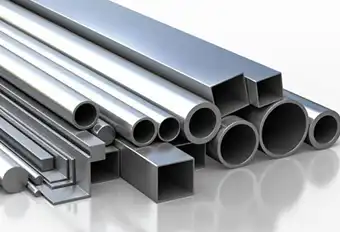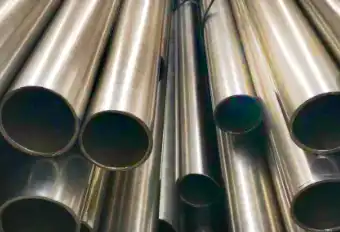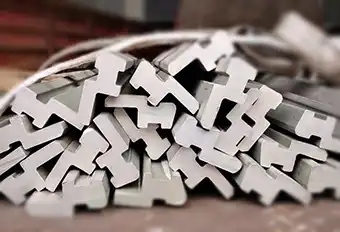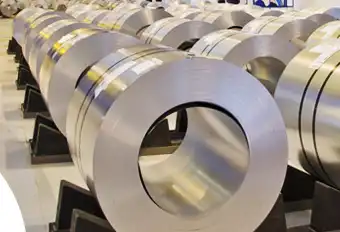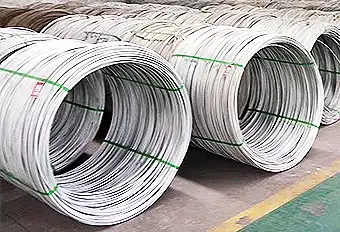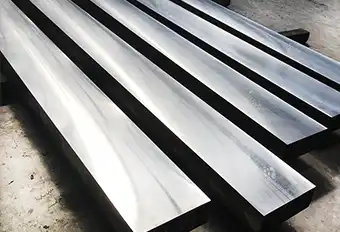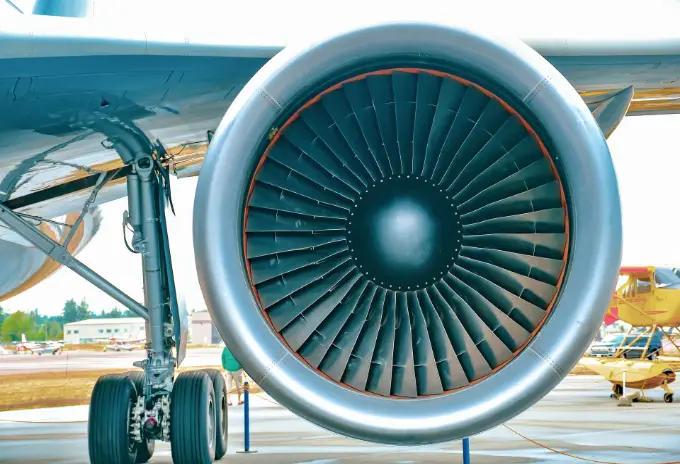ASTM Standards for Steel Plates for Pressure Vessels
Standard designation A20-85 covers a group of common requirements which, unless otherwise specified in the individual material specification, shall apply to rolled steel plates for pressure vessels under each of the following specifications issued by ASTM:
| Title of Specification |
ASTM
Designation |
| Pressure Vessel Plates, Alloy Steel, Chromium-Manganese-Silicon |
A202 |
| Pressure Vessel Plates, Alloy Steel, Nickel |
A203 |
| Pressure Vessel Plates, Alloy Steel, Molybdenum |
A204 |
| Pressure Vessel Plates, Alloy Steel, Manganese-Vanadium |
A225 |
| Pressure Vessel Plates, Carbon Steel, Low and Intermediate-Tensile Strength |
A285 |
| Pressure Vessel Plates, Carbon Steel, Manganese-Silicon |
A299 |
| Pressure Vessel Plates, Alloy Steel, Manganese-Molybdenum and Manganese- Molybdenum-Nickel |
A302 |
| Pressure Vessel Plates, Alloy Steel, 9 Percent Nickel Double-Normalized and Tempered |
A353 |
| Pressure Vessel Plates, Alloy Steel, Chromium- Molybdenum |
A387 |
| Pressure Vessel Plates, Carbon Steel, Improved Transition Properties |
A442 |
| Pressure Vessel Plates, Carbon Steel, High Strength Manganese |
A455 |
| Pressure Vessel Plates, Carbon Steel, for Intermediate-and Higher Temperature Service |
A515 |
| Pressure Vessel Plates, Carbon Steel, Moderate-and Lower- Temperature Service |
A516 |
| Pressure Vessel Plates, Alloy Steel, High Strength, Quenched and Tempered |
A517 |
| Pressure Vessel Plates, Alloy Steel, Quenched and Tempered, Manganese-Molybdenum and Manganese- Molybdenum-Nickel |
A533 |
| Pressure Vessel Plates, Heat-Treated, Carbon Manganese-Silicon Steel |
A537 |
| Pressure Vessel Plates, Alloy Steel Precipitation Hardening 18 Percent Nickel |
A538 |
| Pressure Vessel Plates, Alloy Steel, Quenched and Tempered Chromium-Molybdenum |
A542 |
| Pressure Vessel Plates, Alloy Steel, Quenched and Tempered Nickel-Chromium-Molybdenum |
A543 |
| Pressure Vessel Plates, Alloy Steel, Quenched and Tempered 8 and 9 Percent Nickel |
A553 |
| Pressure Vessel Plates, Carbon steel, Manganese-Titanium for Glass or Diffused Metallic Coatings |
A562 |
| Pressure Vessel Plates, Alloy Steel, Precipitation-Hardening 12 Percent Nickel |
A590 |
| Pressure Vessel Plates, Alloy Steel, Quenched and Tempered Nickel-Cobalt- Molybdenum- Chromium |
A605 |
| Pressure Vessel Plates, Carbon Steel, High Strength, for Moderate-and Lower- Temperature Service |
A612 |
| Pressure Vessel Plates, Five Percent Nickel Alloy steel, Specially Heat Treated |
A645 |
| Pressure Vessel Plates, Alloy Steel, 36 Percent Nickel |
A658 |
| Pressure Vessel Plates, Carbon-Manganese, for Moderate and lower Temperature Service |
A662 |
| Pressure Vessel Plates, Carbon Steel, Quenched and Tempered, for Welded Layered Pressure Vessels |
A724 |
| Pressure Vessel Plates, Alloy Steel and High-Strength Low-Alloy Steel, Quenched and Tempered |
A734 |
| Pressure Vessel Plates, Low-Carbon, Manganese-Molybdenum-Columbium Alloy Steel, for Moderate and Lower Temperature Service |
A735 |
| Pressure Vessel Plates, Low-Carbon Age-Hardening Nickel-Copper-Chromium- Molybdenum-Columbium Alloy Steel |
A736 |
| Pressure Vessel Plates, High-Strength Low-Alloy Steel |
A737 |
| Pressure Vessel Plates, Heat-Treated, Carbon-Manganese-Silicon Steel, for Moderate and Lower Temperature Service |
A738 |
| Pressure Vessel Plates, Quenched and Tempered, Manganese Chromium- Molybdenum-Silicon-Zirconium Alloy Steel |
A782 |
This specification also covers a group of supplementary requirements, which are applicable to several of the above specifications as indicated therein. These are provided for use when additional testing or inspection is desired and apply only when specified individually by the purchaser in the order.
Appendix X2 describes the production and some of the characteristics of coiled product from which pressure vessel plates may be produced.
In case of any conflict in requirements, the requirements of the individual material specification shall prevail over those of this general specification.
The purchaser may specify additional requirements which do not negate any the provisions of this general specification or of the individual material specifications. Such additional requirements, the acceptance of which is subject to negotiation with the supplier, must be included in the order information.
In general, all these materials are intended to be suitable for fusion welding.
Manufacture
Unless otherwise specified in the material specification, the steel may be made by any of the following processes: open-hearth, basic-oxygen, electric-furnace, vacuum arc remelt (VAR) or electroslag remelt (ESR).
The steel may be cast in ingots or may be strand cast. If more than one heat is consecutively strand cast at one time, the heats must be melted to the same steelmaking composition range. When such continuous strand casting is employed, the heat number assigned to the cast product (slab) may remain unchanged until all of the steel in the slab is from the following heat.
The ratio of reduction of thickness from a strand-cast slab to plate shall be a minimum of 3 to 1. Plates are produced in either discrete cut lengths of flat product or from coils. Plates produced from coil means plates that have been leveled or flattened and cut to length from a coiled product and that are furnished without heat treatment. Plates that are annealed, normalized, normalized-and-tempered, or quenched-and-tempered after decoiling shall be considered to discrete cut lengths of flat products.
Heat Treatment
When material is required to be heat treated, the heat treatment may be performed either by the manufacturer or processor or by the fabricator unless otherwise specified in the material specification.
When the heat treatment required by the material specification is to be performed by the purchaser or his agent, and the material is to be supplied by the material producer in a condition other than that required by the material specification, the order shall so state.
When plates are ordered without the heat treatment required by the material specification, heat treatment of the plates to conform to the requirements of the material specification shall be responsibility of the purchaser.
When heat treatment is to be performed, the material shall be heat treated as specified in the material specification. The purchaser may specify the heat treatment to be used provided it is not in conflict with the requirements of the material specification.
When normalizing is to be performed by the fabricator, it may be accomplished by heating uniformly for hot forming. The temperature to which the plates are heated for hot forming shall not significantly exceed the normalizing temperature.
When no heat treatment is required, the manufacturer or processor at his option may heat treat the plates by normalizing and then stress relieving to meet the material specification.
If approved by the purchaser, cooling rates faster than those obtained by cooling in air are permissible for improvement of the toughness, provided the plates are subsequently tempered in the temperature range from 595 to 705oC.


